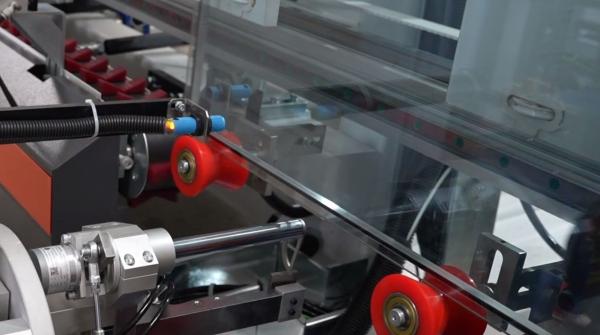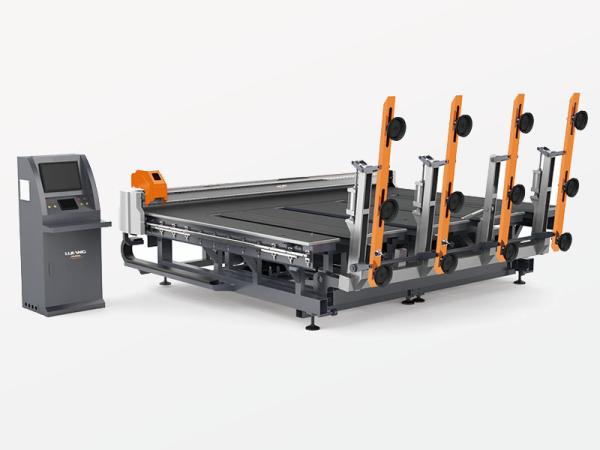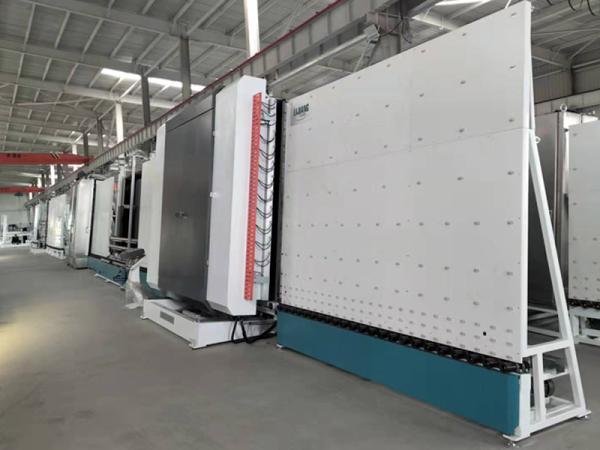What are the precautions for daily maintenance and upkeep of insulating glass processing equipment?

Cleaning the Surface and Interior of Equipment: After daily work, promptly clean up glass debris, dust, oil stains and other sundries on the equipment surface. Use a clean rag to wipe the equipment casing. For stubborn stains, mild detergent can be used, but strong corrosive detergents should be avoided to prevent damage to the equipment surface coating. Regularly open equipment protective doors, inspection ports, etc., and clean up the accumulated dust and debris inside the equipment. Especially in the cutting area of cutting equipment, the water tank of cleaning equipment, and the residual glue area of sealing equipment. If too many sundries accumulate in these areas, it will affect the normal operation of the equipment and even damage equipment components.
Inspecting Key Components: Regularly check the wear condition of the cutting tools of cutting equipment. When the tools are worn to a certain extent, replace them in time to ensure cutting accuracy. Generally speaking, according to the cutting materials and usage frequency, the tools need to be checked once every 50 - 100 hours. For the brushes and nozzles of cleaning equipment, check whether there is blockage or damage. If there is a problem, clean or replace them in time. The rubber tubes and nozzles of sealing equipment should be checked for leakage and blockage to ensure that the sealing glue can be extruded evenly and smoothly. In addition, also check the transmission components of each equipment, such as chains, belts, gears, etc., to see if there is looseness, wear or insufficient lubrication. Adjust, replace or add lubricant in time.
Maintaining Electrical Systems: Regularly check the electrical circuits of the equipment to see if there are problems such as damage, aging, and looseness. If there are potential safety hazards, repair or replace the circuits in time. Keep the interior of the electrical control cabinet clean to prevent dust, water vapor, etc. from entering and affecting the normal operation of electrical components. Regularly conduct functional tests on electrical components, such as checking the sensitivity of sensors and the execution of controller instructions, to ensure the stable operation of the equipment's automated control system. When cleaning electrical equipment, be sure to cut off the power first to avoid electric shock accidents.
Lubricating Mechanical Components of Equipment: According to the requirements of the equipment operation manual, regularly lubricate each mechanical component. For parts that require frequent lubrication, such as the guide rails of cutting equipment and the transmission bearings of cleaning equipment, lubrication can be performed before daily or per shift work. Select an appropriate lubricant. According to the working environment and requirements of the equipment, some equipment needs to use special lubricants that are resistant to high temperatures, low temperatures or wear. When adding lubricant, pay attention to the appropriate amount. Too much may cause lubricant to splash and contaminate products or equipment; too little will not achieve a good lubrication effect.
Calibrating Equipment Accuracy: Regularly calibrate the accuracy of the equipment, especially cutting equipment and measuring equipment. The accuracy of cutting equipment directly affects the cutting size and quality of glass. A glass sample of standard size can be used for cutting tests to check whether the size of the cut glass meets the requirements. If there is a deviation, adjust the equipment parameters in time. Measuring equipment such as thickness gauges and angle gauges should also be calibrated regularly to ensure the accuracy of measurement data and provide a reliable basis for production. Generally, a comprehensive accuracy calibration of the equipment is performed every 3 - 6 months.
 en
en Spanish
Spanish Russian
Russian Arabic
Arabic Portuguese
Portuguese Italian
Italian French
French Turkish
Turkish Vietnamese
Vietnamese Thai
Thai






